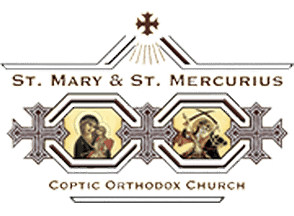September 2025 Letter
Dear brethren,
On the occasion of Coptic New Year (Nayrouz) and in remembrance of our martyred fathers, it is of value to know the sources that informed us about the lives of these martyrs (Patrology by J. Quasten; Vol 1, page 176):
Among the most valuable sources of information for the time of the persecutions are the accounts of the suffering of the martyrs which used to be read to the Christian communities at the liturgical services on the anniversary of the martyr’s death. From the historical point of view they may be divided into three groups:
- 1)The first group comprises official court proceedings. These contain nothing but the questions addressed to the martyrs by the authorities, the answers of the martyrs as they were taken down by the notaries public or the clerks of the court, and the sentences imposed. These documents were placed in the public archives and occasionally the Christians succeeded in obtaining copies of them. The term acts of the martyrs (acta or gesta martyrum) should be reserved to this group, because only here do we have immediate and absolutely reliable sources of history, which give merely the data.
Examples of this group: The acts of St. Justin and his companions, The acts of the martyrs of Scilli in Africa, The proconsular acts of St. Cyprian.
- 2)The second category comprises the reports of the eyewitnesses or contemporaries. These accounts are called passions or martyria.
Examples of this group: The martyrium Polycarpi, The letter of the churches of Vienne and Lyons to the churches of Asia and Phrygia, The passion of Perpetua and Felicitas.
- 3)The third group consists of legends of the martyrs which were composed for the purpose of edification long after the martyrdom took place. In some cases they are a fantastic admixture of some truth with purely imaginary material. Others are simply fiction with no historical foundation whatever.
Examples of this group: The acts of the Roman martyrs, and a collection of Acts of Martyrs made by Eusebius in his work On the Ancient Martyrs.
The blessings of St. Mary, St. Mercurius, and all the martyrs by with us all.
Belleville, September 1, 2025
رسالة شهر سبتمبر ٢٠٢٥
إخوتنا الأحباء
بمناسبة عيد النيروز وتذكرنا لآبائنا الشهداء، من المفيد أن نتعرف على المصادر التي حدثتنا عن سِيَر هؤلاء الشهداء (علم الآبائيات لجوهانس كواستن: الجزء الأول ص 195).
من أقيم مصادر المعلومات التي لدينا عن عصر الاضطهاد هي تلك الروايات التي تتحدث عن الآلام التي جازها الشهداء، والتي كانت تُقرأ للجماعات المسيحية في أثناء الخدمة الليتورجية التي تُقام في الذكرى السنوية لاستشهاد الشهيد. وتنقسم تلك الروايات من وجهة النظر التاريخية إلى ثلاث مجموعات:
- المجموعة الأولى: وتتكون من محاضر المحاكمات الرسمية، وهي لا تحوي على أي شئ سوى الأسئلة التي وجهتها السلطات إلى الشهداء، وإجاباتهم عليها كما سُجِّلَت بواسطة الموثقين القانونيين أو كُتَّاب المحكمة، وكذلك الأحكام التي نُطِقَت ضدهم. وقد كانت هذه الوثائق تُحفَظ في الأرشيف العام. وأحيانًا كان المسيحيون ينجحون في الحصول على نُسخ منها. ويجب أن يكون “أعمال الشهداء” مقصورًا على هذه المجموعة لا غيرها، لأنه هنا فقط توجد مصادر تاريخية مباشرة وموثوق منها، وترد المعلومات ببساطة وبتجرد.
من أمثلة هذه المجموعة: أعمال القديس يوستينوس ورفقائه، أعمال شهداء سيليوم في أفريقيا، الأعمال الحكومية للقديس كبريانوس أسقف قرطاج.
- المجموعة الثانية: وتضم شهادات شهود العيان أو المعاصرين، ويُطلَق على هذه الروايات عنوان “روايات الآلام” (Passiones) أو “روايات الاستشهاد” (Martyria).
من أمثلة هذه المجموعة: شهادة بوليكاربوس، رسالة كنائس فيينا وليون إلى كنائس آسيا وفريجية، آلام بربتوا وفيليسيتاس.
- المجموعة الثالثة: وتحتوي على الأساطير التي تدور حول الشهداء والتي أُلِّفَت لغرض تهذيبي وتعليمي بعد وقت طويل من حادثة الاستشهاد. وفي بعض الأحيان تكون هذه الأساطير عبارة عن خليط رائع من بعض الحقائق ومحتوى أسطوري صرف، والبعض الآخر ما هو إلا خيال بدون أي أساس تاريخي.
من أمثلة هذه المجموعة: أعمال الشهداء الرومانيين، ومجموعة من أعمال الشهداء جمعها يوسابيوس في كتابه المعنون بــ “حول الشهداء القدامى“.
بركة السيدة العذراء مريم والدة الإله، وبركة الشهيد أبو سيفين وكل الشهداء تكون معنا كلنا على الدوام.
نيوجرسي في 1 سبتمبر 2025


